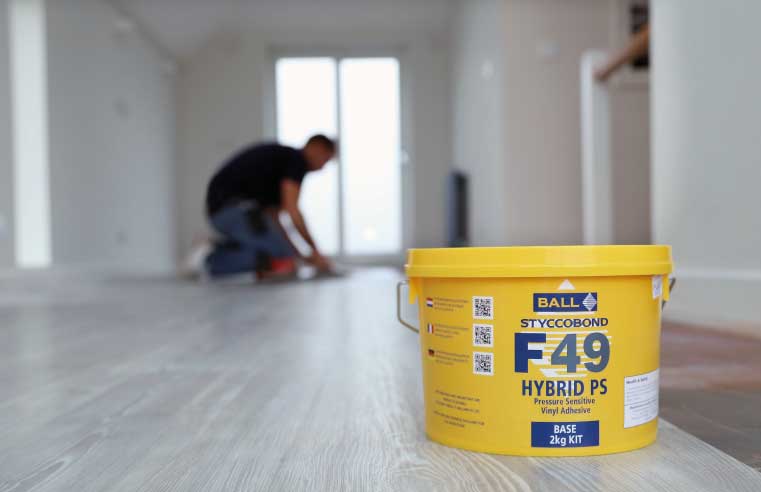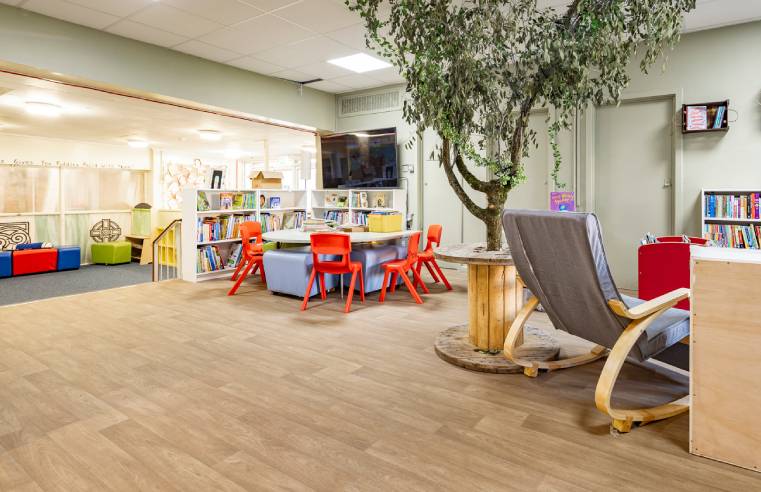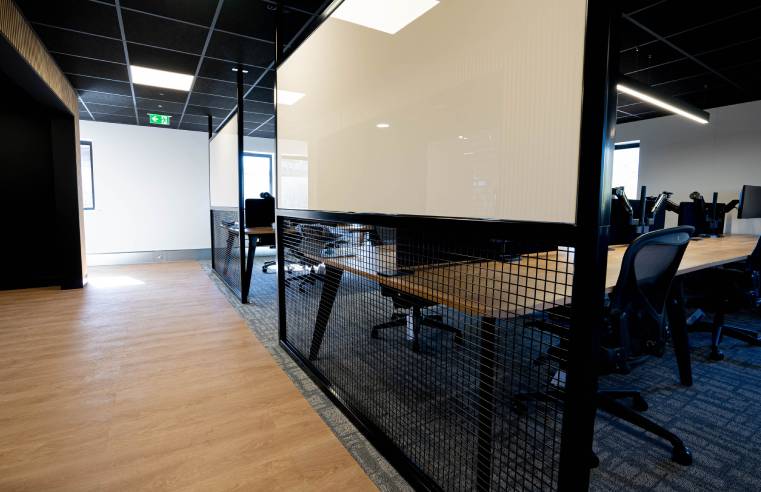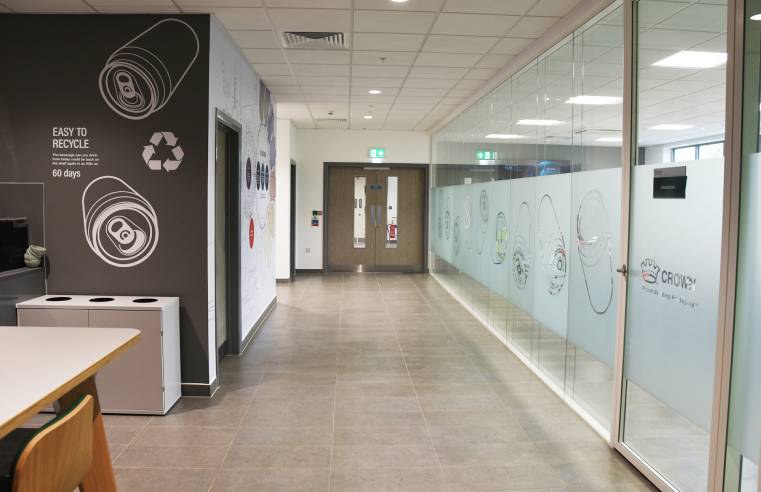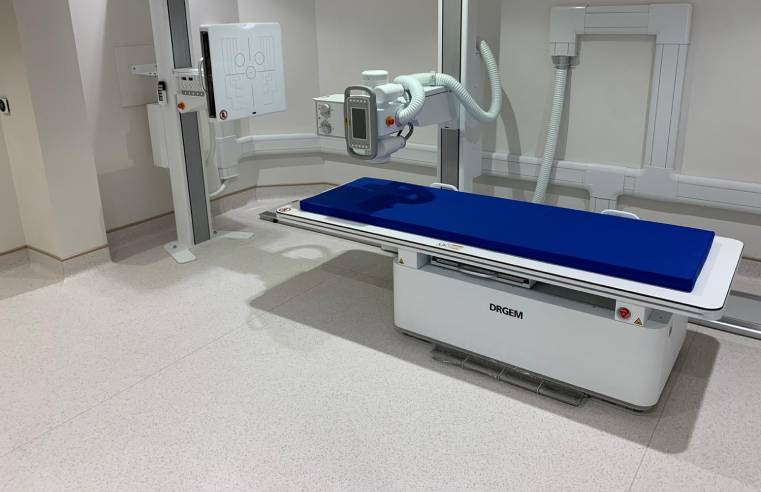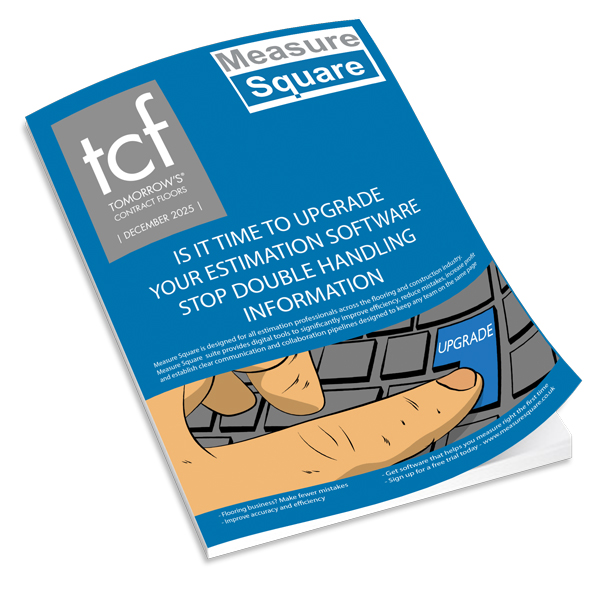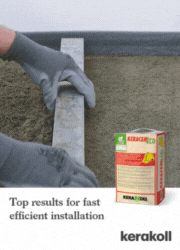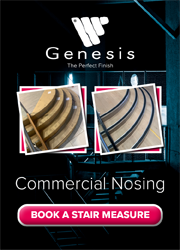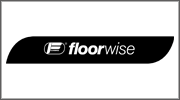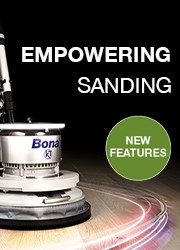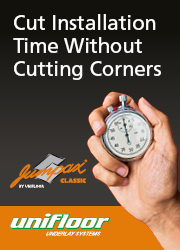How can you prevent trowel serrations showing through thin vinyl floorcoverings? F. Ball & Co. Ltd. discusses.
When installing thin vinyl floorcoverings, including sheets and tiles, trowel serrations showing through floorcoverings (usually referred to as ‘grin-through’) is a surprisingly common problem to occur. Often not immediately noticeable by the contractors as they are working, it may only be when they step back to check the final appearance of their work that ridges in the adhesive become noticeable. In areas that are exposed to lots of natural light, these ridges can become particularly visible, compromising the aesthetics of the flooring.
The solution to prevent trowel serrations shadowing through the vinyl floorcoverings depends on what type of adhesive the flooring contractor is using and the size of the trowel notch used. Pressure sensitive adhesives, which are ideal for preventing tiles and planks from moving when positioning, should be treated differently from wet lay vinyl adhesives.
Subfloor preparation product and flooring adhesives manufacturer F. Ball and Co. Ltd. recommends that their adhesives with pressure sensitive characteristics and their wet lay vinyl adhesives are both applied with a notched trowel, held at a 60o angle to the floor. While this ensures that the optimum amount of adhesive is deposited onto the subfloor, it creates ridges in the adhesive that are often visible through thin floorcoverings if precautions are not taken, especially where larger notch sizes are used.
Pressure sensitive adhesives need to be allowed to dry to a tacky film before floorcoverings are installed. Where a larger trowel notch size is used, such as an A2 trowel, F. Ball recommends that the adhesive is rolled while still wet to flatten the ridges that are formed. As well as reducing the chance of trowel serrations showing through the floorcovering, this action also ensures a uniform coverage that improves contact between the adhesive and floorcovering.
When using a wet lay adhesive, vinyl sheets or tiles are laid while the adhesive is still wet, forcing the adhesive to spread under the weight of the floorcovering and greatly reducing the chance of shadowing. After this step, the contractor should go over the floorcoverings with a roller.
F. Ball has created adhesives specially formulated to reduce the instance of trowel serrations showing through floorcoverings. A recent addition to these adhesives, Styccobond F49 Hybrid PS, is now available that combines temperature tolerance with pressure sensitive qualities. As such, Styccobond F49 has good initial tack and high bond strength, which holds vinyl sheet, tiles or planks firmly in place once positioned by the contractor and, when cured, the bond will hold vinyl floorcoverings in place from temperatures as low as -20°C up to 60°C.
To reduce the risk of grin-through, F. Ball recommends applying Styccobond F49 with a fine notch A1 trowel. The notches on this type of trowel are of a lower profile, which makes them less visible through floorcoverings, and they are also closer together, which reduces the gap between the adhesive ridges.
In a recent project undertaken by contractors from J&S Flooring of Leicester at a residential property, Styccobond F49 was used to install 30m2 of wood-effect luxury vinyl tiles in an upstairs extension with floor to ceiling windows. The high initial tack of the hybrid adhesive allowed contractors to install the vinyl tiles quickly and easily, creating a professional finish without any incidence of ‘grin-through’. Despite the significant exposure to solar gain and consequent temperature changes the room will be subject to, the high bond strength formed by the adhesive will be sure to hold the floorcoverings firmly in place.





